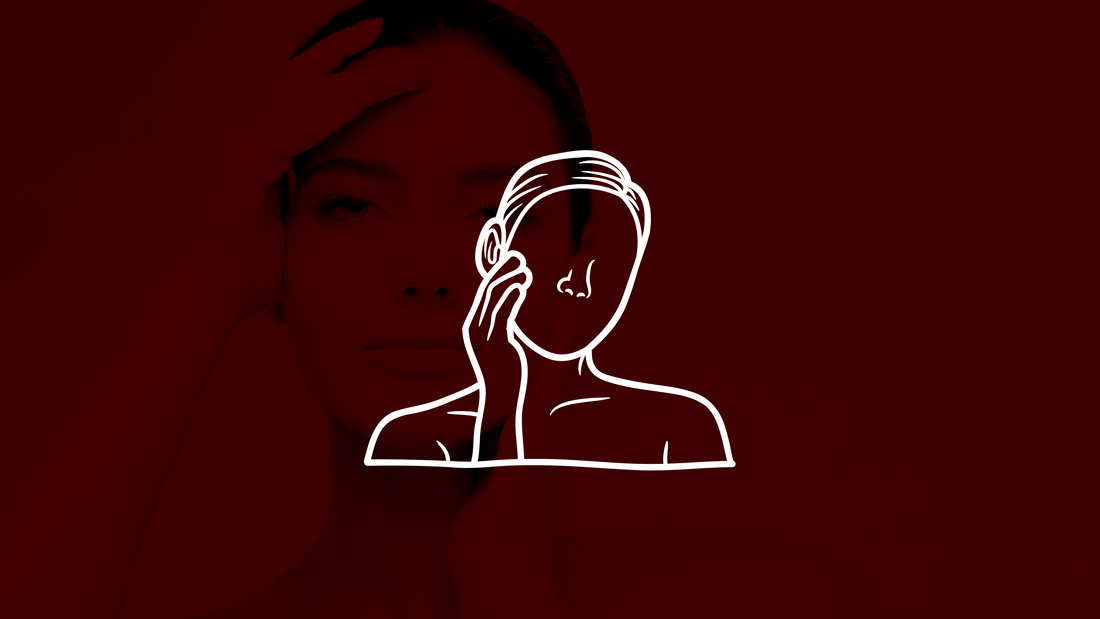LED masks are popular among people who want to turn back the clock and reverse the signs of aging. But do they work?
This article explores the science behind LED masks, as well as what benefits you can expect and an option that could work even better.
How Do LED Masks Work?
Red light therapy masks work by shining specific wavelengths of light directly onto the skin. Unlike topical face treatments like creams or serums, red light therapy works at the cellular level.
The following section outlines the scientifically validated benefits of red light therapy as delivered by LED masks.
Reversed Signs of Aging
In 2023, a study on LED masks confirmed that the treatment could not only halt but even reverse signs of aging, including reducing the appearance of fine lines and wrinkles and firming the skin. After the treatments were concluded, the effects lasted for up to a month.
Better Cellular Performance
As light photons interact with cells, they spark beneficial biological processes including a boost in production of adenosine triphosphate, or ATP, which is the primary fuel in each cell in the human body.
Without adequate ATP production, cells struggle for survival and the whole body suffers.
Red light therapy stimulates ATP synthesis, which is at the core of improved cellular function. It gives the cell enough resources to repair itself, regenerate, and perform its specialized functions.
Reduced Inflammation
Another important benefit is that red light therapy reduces chronic inflammation. Acute inflammation is necessary for healing, but chronic inflammation interferes with healing. Take note if your skin is aging, or if you have acne or other skin conditions!
Improved Synthesis of Proteins Essential for Skin Health
Red light therapy also boosts collagen production. This is the primary reason many people turn to red light therapy masks for facial rejuvenation.
Many studies, including a landmark study from 2014, have documented an increase in intradermal collagen density after red light treatments. All participants reported improved skin texture. Ultrasounds proved that the density of their collagen increased within the skin.
In 2020, a study with 24 participants resulted in higher skin elasticity after 8 weeks of twice-weekly red light therapy. This study only treated the left side of the participants’ faces so that the effects could be more accurately observed.
More collagen and elastin will help prevent sagging, thin, and crepey skin.
Red light therapy also boosts production of hyaluronic acid. Hyaluronic acid isn’t just found in skin care products. Your body naturally produces it. Hyaluronic acid traps moisture in the skin and has other functions in the body like lubricating the joints.
Increasing collagen, elastin, and hyaluronic acid production is essential for treating photoaged or photodamaged skin.
Keep in mind, too, that collagen is necessary everywhere in the body, including the joints.
Skin Health
The American Academy of Dermatology says that 85% of Americans will experience acne at some point in their lives, and 50 million suffer from this condition annually.
Red light therapy isn’t as well-known for treating acne as blue light - but it should be. Blue light kills acne-causing bacteria on the surface of the skin. However, its short wavelengths won’t absorb any deeper.
Red and near infrared light reduce inflammation to make the skin inhospitable to bacteria. When you combine red/near infrared with blue light, you benefit from the healing effects of red/near infrared light and the antibacterial properties of blue light.
Red light therapy also treats chronic inflammatory skin conditions like rosacea. One small study used a combination of blue and red light to successfully treat rosacea. After 10 sessions, patients experienced less erythema (redness), papules, itching, and burning sensations.
Red light calms and soothes the skin while reducing inflammation in other chronic skin conditions like psoriasis.
Melasma can also be treated with red light therapy, which stimulates normal function of the melanocytes, which are the cells responsible for skin pigmentation.
Red light therapy is safe for long-term use. If you have a chronic skin condition or just want to reduce the signs of aging, red light therapy is a safe and effective treatment.
Different Types of LED Masks
Fit, comfort, and of course the right wavelengths are all important considerations when choosing an LED mask.
Fit and Comfort
Some LED masks are rigid. Rigid masks look advanced, but often don’t have very good ventilation. This can be a challenge if you’re claustrophobic or if you’re doing a longer red light therapy session.
Rigid LED masks also don’t fit every face shape and there is no way to customize the fit. It’s important to try on a rigid mask before you buy to make sure it’s comfortable. As with anything, if it’s not comfortable, the user experience may not be ideal.
Flexible LED masks are made of silicone. They are meant to be wrapped around the face. Flexible masks are often more lightweight than rigid masks and can fit any face shape. This makes them more comfortable to wear.
The light weight of LED masks means smaller or fewer components. This can mean less light energy power reaching your skin.
Wavelengths
The most common wavelengths used in LED maks are red, somewhere in the 620-650nm range and near infrared light, which is in the 800-830nm range. These have been widely studied with positive results and no side effects.
Some LED masks feature just red wavelengths, while others feature a combination of red and near infrared light.
Red wavelengths absorb into all of the skin’s layers from the surface, where red light kills acne-causing bacteria, to deeper layers where it reduces inflammation, boosts collagen and elastin production, and promotes blood circulation.
Near infrared wavelengths amplify the effects of red light as there are more light photons passing into the deeper layers of the skin and the tissues beneath it. These longer wavelengths can absorb into connective tissue, fat, fluids, and even bone.
Some LED masks also feature blue wavelengths, which don’t absorb past the outer skin layer but have effective antibacterial properties.
How to Use an LED Mask
You don’t need long sessions to see the benefits of red light therapy. Ten minutes a day at least 3-5 days a week, consistently, will give you the best results. Give the treatment at least a month before you start to see results.
Always cleanse your face before using an LED mask so dirt, oils, cosmetics, or medicines block light from absorbing into the skin.
After the red light treatment, apply your favorite skin care products as usual.
BIOMAX Series for Better Results
The most important thing to consider is: do red light therapy masks work? Yes, LED masks can deliver results but not as quickly or as profoundly as LED panels.
We mentioned that collagen, for instance, is necessary everywhere in the body including connective tissues, joints, and muscles. When you treat your entire body with red light therapy, the benefits won’t be limited to your face.
The same applies to inflammation. Reducing inflammation throughout the body can result in accelerated healing of many conditions.
Since LED masks have only one function, it’s worth looking into red light therapy panels. Some masks are even pricier than panels but they can only treat the face.
Panels will give you significantly more light energy power to ensure the maximum number of light photons reaches the targeted cells - whether they’re skin cells, muscle cells, or cells in the cardiovascular system. This means faster and more profound results.
Panels offer the best treatment versatility: from improving hair growth to treating low back pain or diabetic neuropathy, a panel lets you treat your body head to toe!
Panels also give you the widest range of therapeutic wavelengths. The BIOMAX series features two red and three near-infrared wavelengths as the basis for everyday treatments - again, head-to-toe! They also feature trace amounts of blue and infrared light.
When you consider the benefits of red light therapy, it’s clear that the BIOMAX Series panels are a better value than LED masks - even if facial rejuvenation is your only objective!
Check out the Learning Center to discover the many ways red light therapy can benefit your health! The treatment can be used on virtually any condition, from head to toe.


